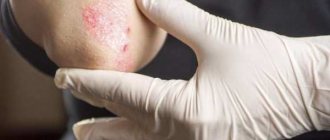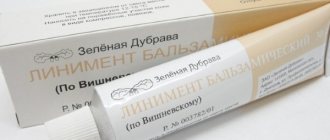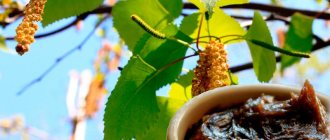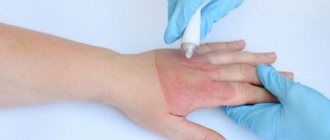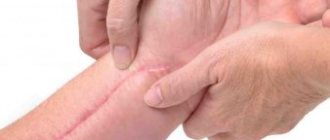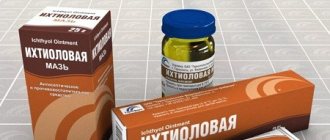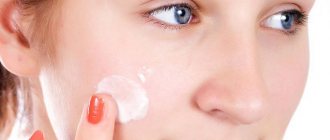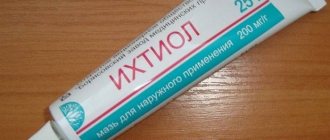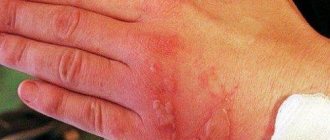Vishnevsky ointment is used for treatment in various areas of medicine, and it costs extremely little - up to 45 rubles per 30 gram tube. Vishnevsky ointment (Vishnevsky balsamic liniment) is a well-known pharmaceutical product used to treat many diseases in cosmetology, gynecology, dermatology, etc. An affordable medicine (45-50 rubles, 30-40 grams per tube) in the form of an ointment, it has a minimum of side effects and contraindications, and the range of application of the drug is so wide that it is simply necessary to always have it on hand in your home medicine cabinet.
What can be treated with Vishnevsky ointment and how to put it into practice at home? Let's take a closer look at all the nuances of use.
Composition of the ointment and medicinal properties
The creator of the ointment, Dr. Vishnevsky, was a military surgeon. For a practicing physician, it was important to obtain an effective means of treating infected wounds (military wounds are often accompanied by infection and suppuration). Therefore, the composition included only simple, affordable drugs with antiseptic and wound-healing effects. It’s interesting to know: in addition to the ointment, Dr. Vishnevsky invented the novocaine blockade (a method of local anesthesia).
Vishnevsky’s ointment (or liniment) consists of three components:
- tar;
- xeroform;
- Castor oil.
Each of the listed components has a specific effect. Together they complement each other and provide an overall therapeutic effect.
Castor oil is a wound-healing component
Castor oil is a well-known wound healing agent. It is pressed from the poisonous seeds of the castor bean bush. The product is often used for external treatment of rashes, peeling, and for healing wounds, burns, and frostbite. Castor oil also has antimicrobial properties - its components destroy the cells of bacteria and fungi.
Castor oil brings double benefits: it disinfects and forms new skin cells.
Tar is a broad-spectrum antiseptic.
Tar is a product of sublimation of tree resin. It has a sharp, unpleasant odor, which persists as part of Vishnevsky’s liniment. Depending on the type of tree bark from which it is evaporated, tar can be aspen, birch, or pine. To make Vishnevsky's liniment, birch tar is used.
In folk medicine, birch tar is used to treat wounds, inflammations, infections, and tumors. It is used for sore throat, gangrene, fungal infections, as well as ulcers, mastitis, and psoriasis. Doctors recommend tar to get rid of worms and external parasites (ticks, lice).
Thus, birch tar is a broad-spectrum antiseptic. It contains more than 100 useful components that counteract microbes and disinfect wounds. The antimicrobial properties of tar in Vishnevsky’s composition form the antiseptic effect of the product.
Xeroform is a synthetic antiseptic
Xeroform is a synthetic component, a powder, in which there are two active ingredients - a bismuth salt and a carboxylic acid. It is obtained through chemical reactions. Bismuth in xeroform oxidizes pathogenic bacteria. Carboxylic acid - disrupts the structure of the bacterial cell.
This synthetic product is a known antiseptic. It binds pathogenic microorganisms and causes their death. Used to treat external wounds and treat skin inflammation. Ointments with xeroform are often prescribed after operations and for the treatment of postpartum tears, the umbilical wound in a baby, for eczema and burns, after skin grafts.
https://www.youtube.com/watch?v=_HR_aKYIeQ8
Drug interactions
During the Great Patriotic War of 1941-45. Vishnevsky ointment was widely used at all stages of the wound process. The wounds of Soviet soldiers often ended in gangrene, while in other armies gangrene practically did not occur.
In military field medicine in other countries, no ointments were used at all. The wounds were subjected to surgical treatment, cleaning, they were washed with any antiseptic, dead tissue was excised, and treated with antibiotics.
The fatty base of the product seals the wound surface and turns off cellular respiration, so in the first 3-4 days after injury, any ointments on open wounds, including Vishnevsky's balm, should not be used.
These include:
- Lymphangitis. This is an inflammatory process that is localized in the lymphatic vessels. The formation appears in the form of reddish stripes.
- Lymphadenitis. The pathology affects the lymph nodes, which become large and painful.
- Thrombophlebitis. Patients experience inflammatory processes in the veins. A person develops painful red cords.
Contact spread of pus contributes to the formation of purulent leakage, periostitis, purulent arthritis, phlegmon and various abscesses. The most severe complication is sepsis. If the wound does not heal for a long time, the problem becomes chronic.
Purulent wounds damage the upper layer of the dermis and underlying tissues. In this case, patients note the formation of severe swelling, suppuration and tissue necrosis. It is important to treat closed wounds with special ointments that will help draw the resulting secretion to the surface. Before treatment, it is important to see a doctor and get advice.
A specialist will help determine the cause of the formation of suppuration. There are cases when purulent closed wounds develop into a chronic form. After a comprehensive examination and study of the patient’s medical history, the doctor will prescribe the correct treatment. Each patient's problem is considered individually depending on the clinical picture.
- How does Levomekol ointment work and what does it help with?
- Wound healing ointment
- Syntomycin ointment - instructions for use
- Pharmaceutical ointment for wrinkles
- The best healing ointment for open wounds
- Levosin ointment - instructions for use
Only a doctor can choose the right drug, so it is better to consult a specialist before starting treatment.
The ointment is prescribed in accordance with the characteristics of the inflammatory process.
Standard external treatment is not suitable for every wound.
The presence of complications requires proper comprehensive treatment, and sometimes antibiotics cannot be avoided.
Therapy can be carried out without medical assistance, but it is better to consult. Sometimes, traditional medicine is enough, but when it comes to animal bites, mandatory treatment with antibiotics is required. An excellent solution would be a combination of medications and folk remedies.
These medications should be used only if suppuration has already occurred. In the absence of symptoms of subcutaneous inflammation (itching, burning, pain, redness, swelling, local increase in temperature, swelling), it is recommended to treat abrasions and scratches with antiseptics. Popular medications in this group are: iodine, brilliant green, alcohol, calendula tincture.
If these remedies do not fail the necessary therapy, you can add ointments to break the boil and remove the pus. You can purchase a suitable drug at a pharmacy or make it yourself.
During the Great Patriotic War. Vishnevsky ointment was widely used at all stages of the wound process. The wounds of Soviet soldiers often ended in gangrene, while in other armies gangrene practically did not occur.
- localization, volume of closed wound surface;
- patient's age;
- at what stage did you seek medical help?
- treatment method – surgical measures, conservative therapy;
- presence of complications;
- concomitant chronic diseases.
Complications of the purulent process are varied - from system-wide sepsis, gangrene, limb amputation to death.
Do not look for a remedy for drawing pus from a closed wound in a pharmacy or on the Internet. Especially in the presence of chronic diseases. Consult a doctor whether the wound is open or closed. It is dangerous to experiment with such processes with different ointments.
Article verified
by the editors
The medicine contains substances that have an irritating effect on the skin (birch tar), so hives, rashes may appear, accompanied by itching and swelling of the tissues. Tar increases skin sensitivity to sunlight (ultraviolet). Staying in the sun in the warm season during treatment is extremely undesirable.
In the instructions for use of liniment according to Vishnevsky, there is no data on interaction with other dosage forms. With nonspecific use of the ointment - for the treatment of gynecological, sexually transmitted diseases, purulent otitis (inflammation of various parts of the ear), sinusitis, varicose veins, the antiseptic effect of the dosage form is enhanced in combination with other medications (antibiotics, herbal remedies).
DETAILS: Walnut - benefits and harms of walnuts, application, walnut partitions (shells), tincture and walnut oil
Instructions for Vishnevsky ointment
Instructions for use of Vishnevsky ointment regulate contraindications and indications for treatment and methods of application. Liniment is recommended for the treatment of wounds of various origins - surgical incisions, postpartum injuries, purulent processes, external inflammation.
Contraindications for Vishnevsky ointment include renal failure and tumors. With prolonged treatment with the composition, rashes and redness may form.
And one more thing: it is not recommended to apply Vishnevsky’s liniment to open areas of the body in the summer (birch tar increases the skin’s sensitivity to ultraviolet radiation).
The shelf life of the drug is 3 years (in a dark, cool place up to +18ºC).
Overdose
The proportion of plant-based, environmentally friendly components in the ointment is large. The balm is intended only for external local use, applied in a thin layer or soaked in gauze bandages and tampons with the medicinal mixture. Therapy is prescribed in dosed courses. Signs of overdose are observed only with prolonged use of the drug. Rash, itching, redness, peeling and other allergic skin reactions appear in a mild form. When you stop using the drug, the symptoms disappear.
What determines the effectiveness of application?
Vishnevsky's composition was invented more than a hundred years ago. There has been debate in medical circles about the appropriateness of its use. It was discussed that during the application of liniment, a film impenetrable to air is formed on the surface of the wound. Under such a film, conditions are created for the development of anaerobic bacteria. This means that purulent processes may intensify.
In order for Vishnevsky’s liniment to bring only benefits, it is necessary to use it correctly. Before applying to the skin, the surface must be disinfected with salicylic alcohol, iodine or a weak solution of manganese.
Practice has proven the effectiveness of the drug for treating abscesses. As a result of increased blood flow, the abscess forms faster, breaks through and heals.
The instructions recommend using Vishnevsky's composition externally in the form of dressings for 8-12 hours, if necessary - longer (with periodic changing of the dressing) until complete recovery.
Correct use of Vishnevsky ointment
Vishnevsky's liniment is a remedy for the treatment of purulent inflammation. It accelerates the maturation of boils and their breakthrough, followed by healing.
A process that could take 7-10 days takes place in 12-24 hours.
A pimple, abscess, or another type of boil ripens, forms a purulent head, bursts, followed by the discharge of purulent exudate. Further use of liniment removes remaining pus and heals the wound without scars. Liniment is used to treat a number of purulent inflammations.
Want something interesting? What does Vishnevsky ointment help with:
- acne;
- gynecological inflammation;
- congestion in the extremities (thrombophlebitis, endarteritis, varicose veins, trophic ulcers, gangrenous processes);
- psoriasis;
- burns, bedsores, frostbite;
- swelling, dropsy.
Let's take a closer look at how and why Vishnevsky ointment is used.
Vishnevsky ointment for acne
To reduce and get rid of acne and pimples of various etiologies, bandages and anointings are used. Bandages are used for extensive rashes. To do this, take a bandage or gauze (folded in several layers), apply liniment to it, and apply it to the affected area (cheek, chin, forehead). Cover with a cotton cloth and secure with adhesive tape. Leave it overnight. In the morning, remove and wipe the skin with salicylic alcohol or chlorhexidine (to remove pathogenic bacteria and the smell of the ointment).
The second method is spot application of liniment without a compress. In this case, Vishnevsky ointment for acne on the face is applied separately to each pimple (use an ear stick or a match with cotton wool). Pre-pimples are treated with iodine (spotwise), and liniment is applied on top. There is no need to cover it with a band-aid; you need to renew the ointment every 2 hours. If the boil is mature and does not break out on its own, you can pierce it with a needle and apply the composition again. You can't squeeze a pimple.
The use of Vishnevsky ointment in gynecology
Vishnevsky ointment in gynecology is used to treat various inflammations (appendages, ovaries, inflammation of the vagina, tubal infertility - obstruction of the fallopian tubes). Tampons with liniment reduce the area of inflammation and reduce swelling. In addition, Vishnevsky’s composition promotes rapid healing of tears, postpartum sutures, and resorption of adhesions.
Tampons with Vishnevsky ointment in gynecology have an antiseptic and epithelializing effect. They are placed in the vagina overnight. Each tampon consumes up to 15 g of ointment, the treatment period is up to 10 days with a break of 10 days.
You need to know: Vishnevsky ointment treats bacterial infections and inflammation. Viral infections and a number of fungal infections - the ointment does not cure.
Tampons with Vishnevsky ointment help in the treatment of endometriosis. They restore the inner layer of the fallopian tube, which allows the fertilized egg to move along it into the uterus and be implanted with the onset of the desired pregnancy.
Vishnevsky ointment for hemorrhoids
Vishnevsky ointment is used for the treatment of external hemorrhoids and for postoperative therapy for the removal of hemorrhoids. The ointment not only promotes the formation of new skin, but also prevents wound infection.
When treating the initial stages of hemorrhoids, liniment helps stop the process and prevent surgery, and promotes the resorption of lumps. With early treatment (in the initial stage), you can get rid of hemorrhoids completely.
How does liniment work for hemorrhoids:
- increases blood circulation in the application area;
- reduces swelling;
- heals wounds;
- reduces pain.
Vishnevsky's liniment is applied only to a clean surface. This is a mandatory condition for treatment, otherwise the composition may cause harm. If fecal particles remain under the fatty film, they will activate anaerobic processes and increase infection.
Therefore, before applying the medicinal composition, the anus is treated with a weak solution of manganese (or warm sitz baths are made in water with potassium permanganate). It is recommended to treat the anus with manganese solution for 24 hours, and only then begin treatment with liniment.
The ointment is applied as a compress at night. You can use another treatment regimen - apply liniment for 2-3 hours several times a day.
Hemorrhoids often become active during pregnancy. Is it possible for pregnant women to treat hemorrhoids with Vishnevsky’s liniment?
Vishnevsky ointment during pregnancy
External use of liniment during pregnancy is safe and permitted for the following diseases:
- Haemorrhoids.
- Varicose veins on the legs - the use of ointment reduces the protrusion of veins and reduces pain in games.
- Swelling of the legs - ointment reduces the manifestations of edema.
- Gynecological inflammations (tampons with liniment during pregnancy, such treatment is prescribed in case of urgent need).
Features of treatment: before applying liniment, it is necessary to wipe the skin with alcohol. This will remove bacteria that can grow under anaerobic conditions.
Symptoms of purulent inflammation
Sometimes there are no pharmaceutical drugs at home, but the wound has festered and there is pain.
In this case, the question quite reasonably arises - what to apply to draw out the pus? Traditional medicine offers many recipes to help cure a purulent wound. But it is better to use them only in cases where there really are no medications. Non-traditional treatment options for purulent wounds:
- Cabbage leaf is a good remedy to help draw out pus from a wound. Wash the sheet under running water and wipe. Then knead it in your hands so that droplets of juice appear. Next, the sheet is applied to the wound and secured with a bandage. Leave for 12 hours. Cabbage neutralizes inflammation, accelerates the recovery process, and has a calming effect. Improvement is observed after the first application.
- Saline solution helps at the early stage of the purulent process. If a limb is damaged, you can make a salt bath: add 10 g of table salt to 100 ml of warm water. Alternative: soak a bandage in the solution, apply it to the wound, fix it on top, and leave it for 12 hours.
- Honey and chamomile are natural antiseptics. Recipe for purulent wounds: add 15 g of chamomile to 200 ml of hot water. Bring the liquid to a boil, leave for 30-40 minutes. Then add a teaspoon of honey to the broth. Soak cotton wool in the broth, apply to the wound, and secure with a bandage. Make 2-3 compresses per day.
To treat a purulent wound at home, you can make a cake based on garlic and laundry soap. Reviews show that such a cake cleanses the wound of pus, destroys pathogenic microorganisms, which speeds up recovery. You need to bake a head of garlic in the oven, then mix the vegetable with grated laundry soap.
When the wound suppurates, it is necessary to use ointments that have antiseptic, anti-inflammatory, antimicrobial and regenerating effects. If a large area of skin is affected, the use of tablets is additionally required. And in severe cases, when intoxication is detected, procedures are needed: hemodialysis, hemosorption, forced diuresis. If home treatment does not lead to improvement, then you should consult a doctor.
Vishnevsky ointment is a native Russian invention that has no analogues anywhere in the world. It appeared at the beginning of the last century (1927) and since then has gained both devoted admirers and ardent opponents. Some people believe that it cures literally all diseases, others argue that it is at least useless, and in some cases even harmful. Why is there such an opposite opinion about Vishnevsky’s ointment? We will answer these questions in the article.
Fans of Vishnevsky's ointment claim that there is no better remedy for the treatment of purulent diseases. We agree with them - its unique composition (birch tar, xenoform and castor oil) provides a warming and locally irritating effect, and is excellent for boils, ulcers and bedsores.
The ointment is also successfully used in the treatment of burns, frostbite, ulcers and acne, inflamed joints and diseases of the female genital organs.
Agree, if Vishnevsky’s ointment did not give any healing effect, doctors would not prescribe it for almost a hundred years in a row.
Opponents appeal that when Vishnevsky ointment is applied to an open wound, a dense film is created that does not allow air to pass through, and, accordingly, does not allow the wound to heal. Moreover, complications may develop, including gangrene.
This opinion appeared after the Second World War, when wounded soldiers, although Vishnevsky ointment was used in treatment, developed an anaerobic wound infection - gas gangrene. To be fair, it is worth noting that the full name of this product is balsamic liniment, which means a more liquid form than an ointment and, accordingly, better absorption.
Therefore, Vishnevsky’s ointment does not create such a dense film as they would like to convince us, and the occurrence of gangrene on the battlefield was most likely due to complete unsanitary conditions, and not to the fact that doctors used this ointment.
Whether you use Vishnevsky ointment or not is up to you to decide, but even now this controversial drug has many fans who are not afraid of either the pungent smell or the dubious possibility of complications. After all, the most important thing is to know that Vishnevsky ointment, like any other drug, should be prescribed by a doctor, and if used correctly it will not cause any harm.
The basic principle of treating open wounds is to restore the regenerative function of the skin - nature is designed in such a way that skin cells are capable of self-healing under certain conditions. But this is only possible if there are no dead cells at the wound site - this is the essence of treating open wounds.
Treatment of open wounds in any case involves going through three stages - primary self-cleaning, inflammatory process and granulation tissue restoration.
Before the victim seeks professional medical help, he must thoroughly wash the wound with antiseptic agents - this will ensure complete disinfection of the open wound. To minimize the risk of wound infection during treatment, hydrogen peroxide, furatsilin, a solution of potassium permanganate or chlorhexidine should be used.
The speed of its healing depends on how correctly the initial cleaning of the open wound was carried out. If a patient comes to the surgeon with punctured, cut, lacerated open wounds, then he must undergo specific surgical treatment. Such deep cleaning of the wound from dead tissue and cells will speed up the healing process.
Please note: in most cases, a patient with an open wound is given anti-tetanus serum, and if the wound was formed after an animal bite, an anti-rabies vaccine.
The entire described process of treating an open wound reduces the risk of infection and the development of complications (sepsis, gangrene, suppuration), and accelerates the healing process. If the treatment was carried out on the first day after receiving the injury, then no complications or serious consequences are expected.
If there is an excessive amount of serous-fibrous exudate in an open wound, then surgeons will take measures to treat the open, weeping wound. In general, such abundant discharge has a beneficial effect on the healing rate - it additionally cleanses the open wound, but at the same time, the task of specialists is to reduce the amount of exudate - this will improve blood circulation in the smallest vessels (capillaries).
DETAILS: How to lower blood pressure at home
When treating weeping open wounds, it is important to change sterile dressings frequently. And during this procedure, it is important to use a solution of furatsilin or sodium hypochloride, or treat the wound with liquid antiseptics (miramistin, okomistin and others).
To reduce the amount of serous-fibrous exudate released, surgeons use dressings with a 10% aqueous solution of sodium chloride. With this treatment, the bandage must be changed at least once every 4-5 hours.
A weeping open wound can also be treated with the use of antimicrobial ointments - the most effective are streptocidal ointment, Mafenide, Streptonitol, Fudizin gel. They are applied either under a sterile bandage or on a tampon, which is used to treat an open, weeping wound.
Xeroform or Baneocin powder is used as a drying agent - they have antimicrobial, antibacterial, and anti-inflammatory properties.
It is an open purulent wound that is most difficult to treat - purulent exudate must not be allowed to spread to healthy tissue. To do this, a regular dressing turns into a mini-operation - with each treatment, it is necessary to remove accumulated pus from the wound; most often, drainage systems are installed so that the pus is provided with a constant outflow.
Each treatment, in addition to the specified additional measures, is accompanied by the introduction of antibacterial solutions into the wound - for example, Dimexide. To stop the necrotic process in an open wound and remove pus from it, specific agents are used in surgery - Trypsin or Himopsin powders.
A suspension is prepared from these powders by mixing them with novocaine and/or sodium chloride, and then sterile napkins are impregnated with the resulting product and tucked directly into the cavity of an open purulent wound. In this case, the bandage is changed once a day; in some cases, medicated wipes can be left in the wound for two days.
In addition to such thorough surgical treatment of an open purulent wound, the patient must be prescribed antibacterial drugs (antibiotics) orally or by injection.
Features of the treatment of purulent open wounds:
- After cleaning the open wound from pus, Levosin ointment is injected directly into the cavity. This drug has antibacterial, anti-inflammatory, and analgesic effects.
- For medicinal dressings when treating an open wound with purulent contents, Levomikol ointment and Sintomycin liniment can be used.
- Baneocin ointment will be most effective in the treatment of open wounds with identified Staphylococcus aureus, Nitacid ointment - in the treatment of wounds with diagnosed anaerobic bacteria, Dioxidine ointment is generally a universal remedy - effective against most types of infections, including against Pseudomonas aeruginosa and gangrene pathogens.
- Most often, when treating open purulent wounds, surgeons use ointments based on polyethylene oxide; modern medicine refuses Vaseline/lanolin in this case.
- Vishnevsky ointment is an excellent way to get rid of pus in an open wound - it both resolves infiltrates and increases blood flow in the wound. This medicine is applied directly to the wound cavity 1-2 times a day.
- When treating a patient with an open purulent wound in a medical institution, immunotherapy and detoxification therapy are necessarily prescribed.
- Ultrasound or liquid nitrogen may be used in the hospital to speed up the wound healing process.
- If the wound does not have suppuration, then there is no need to use Vishnevsky ointment. As far as I know, this ointment is not applied to open wounds. You can treat the wound with hydrogen peroxide, then blot it with a napkin and bandage it. Apply brilliant green or iodine to the edges of the wound, but be careful not to get into the wound itself, otherwise you may get burned.
- Yes, use this ointment, it will help, but first you need to close the open gaping wound with staples or stitch it up, otherwise it will take a long time to heal. Another good ointment in your case is Levomikol, apply a layer of ointment and apply a loose, adjacent bandage, CHANGE EVERY DAY, when applying a bandage, use a separately cut piece of bandage, apply ointment to it and apply to the wound. Before each application of a bandage with ointment, be sure to take a piece of cotton wool or bandage and soak it in a disinfectant liquid - alcohol, vodka, hydrogen peroxide - be sure to wash off the resulting pus, scabs, and dirt. If you follow it, it will pass in a week.
- Vishnevsky ointment (Balsamic Liniment) is used for inflammatory processes on the skin, but not on open wounds. If there is no inflammatory process, then there is no need to use it. For better wound healing and to prevent infection, the wound can be powdered with streptocide powder or treated with brilliant green.
- It is possible, but it is rather weak. It may help, or it may not, but if there is no pus and the wound is fresh, then it will most likely help. Ichthyol ointment draws out pus well. Levomekol also draws out pus and Levomekol heals wounds well. It is better to apply levomekol to the wound, it will heal, even if there is no pus. Before applying the ointment, disinfect the edges of the wound. Alcohol, brilliant green or iodine. Better with alcohol. Change the dressings 2 times a day. Everything for you, or rather for your husband, will heal!
Good health to you!
- No you can not. Vishnevsky's ointment is generally an old, dubious remedy, and there is no question of applying it to such a wound. To recommend something else, you need to see what condition the wound is in. Do not self-medicate, consult a surgeon.
- They wanted to ban Vishnevsky ointment in medicine 7-8 years ago and banned it repeatedly due to its ineffectiveness, as they said in medicine. workers.
And yet they still use it to this day.
It is impossible to apply Vishnevsky ointment to an open wound, as studies have shown that by applying ointment to an open wound, the access of oxygen is blocked and so-called anaerobic inflammation develops. Even when using this ointment as a compress.
- Vishnevsky's ointment has existed for so long that its properties have already become much weaker than new ointments. You can anoint the wound, if it is open and there is a possibility of suppuration, then apply a thin layer of it, so as not to worry that it can become very inflamed, but only a surgeon will give an exact answer.
- Vishnevsky ointment is usually used to remove pussies and boils in the early stages of their appearance. If this abscess on the body has opened, then the ointment should not be used under any circumstances. you need to go to the hospital, they will cut it out for you and there is nothing wrong with that. all the more you need to be careful with mucous membranes. Sometimes the piss happens near the eye and then you need to apply it very carefully.
- You can use it, but in my opinion there are more disadvantages than advantages. Firstly the smell. Everyone who has come across this ointment knows about its smell. He's nasty. Secondly, the drug is old, there are more modern means. Thirdly, why smear the wound, it’s better to keep it open. But if you don’t have the funds to purchase something else and you want to use it, then good for you.
DETAILS: Shishonin gymnastics for the neck for osteochondrosis of the cervical spine with video, reasons and contraindications
Despite the abundance of positive effects, the ointment cannot be used in a number of serious diseases, and before use you should consult a doctor
Analogues of Vishnevsky ointment
Over the course of a hundred years after the invention of Vishnevsky's ointment, many formulations were developed and released - more effective, without a pungent odor, providing oxygen access to the wound. What formulations does the modern pharmacy industry offer as an alternative to the old remedy (Dr. Vishnevsky’s liniment)?
- Ichthyol ointment. The main active ingredient (ichthyol) is active against staphylococci, streptococci, and yeast-like fungi. Has anti-inflammatory and analgesic effects. In addition to treating boils, it is used for eczema, streptoderma, burns and erysipelas. The main effect of ichthyol is that it draws out pus, but does not enhance wound healing.
- Levomekol is an antibiotic ointment. Provides a pronounced effect in the treatment of purulent wounds. Significantly more effective than Vishnevsky's liniment.
And also the following drugs:
- Actovegin (cream and gel that activate the absorption of glucose and oxygen, and therefore stimulate wound healing).
- Solcoseryl (ointment and jelly, also activates the absorption of oxygen and glucose).
- Acerbine (contains malic and benzoic acids, which provide antimicrobial effects).
- Happyderm (a cream containing the antiseptic chlorhexidine and dexpanthenol, a stimulator of skin epithelization).
- Nitacid (cream with an antibacterial component - nitazol, streptocid).
- Ebermin is a drug that contains a natural antiseptic (silver).
And also Bepanten (cream, lotion, ointment), Panthenol (foam or ointment), Rescuer, Miramistin (antiseptic solution). Folk remedies include tincture of calendula, propolis, pulp of aloe leaves.
Syntomycin liniment
What ointment draws out pus from a closed wound? Sintomycin ointment helps cleanse the wound of purulent masses. The product effectively stops the inflammatory process, cleans the wound, and accelerates the healing process. The drug destroys pathogenic microorganisms because it disrupts the production of microbial cell walls.
Syntomycin ointment is used for the treatment of purulent wounds, purulent and inflammatory pathologies of the skin, and small ulcers. The drug has relatively many contraindications for use:
- Hypersensitivity to the composition;
- Liver/renal failure;
- Pregnancy;
- Breastfeeding;
- Child's age up to 4 months;
- Circulatory disorders in the brain;
- Fungal skin pathologies.
Synthomycin ointment is applied directly to the affected area, followed by a bandage that does not allow air to pass through. Frequency of application – 1-2 times a day. The bandage may not be removed for 24 hours. Side effects may occur with the use of the drug: angioedema, leukopenia, thrombocytopenia. If you have negative symptoms, you should immediately contact a medical specialist.
